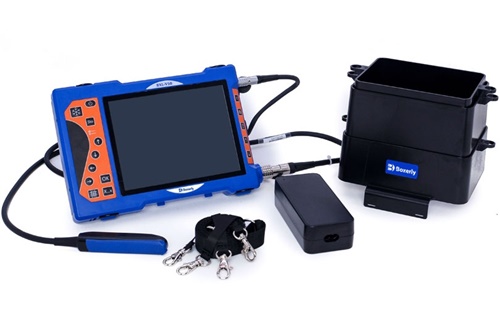BXL Ultrasound Veterinary: Revolutionizing Animal Health Diagnostics
In the ever-evolving field of veterinary medicine, diagnostic tools play a crucial role in ensuring the health and well-being of animals. The BXL Ultrasound Veterinary system stands out as a cutting-edge tool that is transforming the way veterinarians diagnose and manage animal health. Whether for routine health checks, pregnancy monitoring, musculoskeletal injury assessments, or organ health evaluations, the BXL ultrasound system provides high-resolution imaging, real-time diagnostics, and portability, making it a must-have for veterinarians and animal care professionals.

In this article, we will explore the key features, advantages, and applications of the BXL Ultrasound Veterinary system, highlighting how it enhances the diagnostic process for animal health and offers a reliable, cost-effective solution for veterinary practices.
What is the BXL Ultrasound Veterinary System?
The BXL Ultrasound Veterinary system is a sophisticated diagnostic device that uses ultrasound technology to produce detailed images of the internal structures of animals. By emitting high-frequency sound waves that bounce off tissues and organs, the system generates real-time images that veterinarians can use to assess the health of various animal species, from small pets to large livestock.
Designed with veterinarians in mind, the BXL ultrasound system is optimized for efficiency, portability, and user-friendly operation. It’s a versatile tool that enables veterinary professionals to perform accurate, non-invasive diagnostics on a wide range of animals, including cats, dogs, horses, cattle, sheep, and poultry.
Key Features of the BXL Ultrasound Veterinary System
1. High-Resolution Imaging for Precise Diagnostics
The BXL ultrasound system is equipped with high-resolution imaging, providing crystal-clear visuals of the internal structures of animals. This allows veterinarians to see fine details of organs, tissues, and even small anomalies, making it easier to detect issues such as tumors, infections, organ malfunctions, and musculoskeletal injuries.
Clear and accurate imaging is critical for making informed decisions about animal treatment and care. Whether monitoring a pregnancy, assessing internal organs, or diagnosing an injury, the clarity of the images produced by the BXL system enhances the diagnostic process.
2. Portable and Wireless Technology
One of the standout features of the BXL ultrasound veterinary system is its portability. Unlike traditional ultrasound machines, which are large and stationary, the BXL system is lightweight and compact, making it ideal for use in field settings, on farms, and in emergency situations.
Moreover, the wireless technology of the BXL system allows for seamless data transfer to mobile devices such as smartphones, tablets, or laptops, giving veterinarians the flexibility to analyze and store diagnostic images remotely. This mobility makes it easier to perform on-site diagnostics, whether you’re traveling to farms, veterinary clinics, or remote locations.
3. Real-Time Imaging for Immediate Feedback
The BXL ultrasound system offers real-time imaging, meaning that veterinarians can see the results of the ultrasound examination immediately. This is especially valuable in emergency situations or when time-sensitive decisions need to be made. For example, if a veterinarian is examining a pregnant cow, they can quickly determine the health of the fetus or the presence of any complications, allowing them to act promptly.
Real-time imaging also enables more efficient consultations, reducing the need for follow-up appointments or additional tests.
4. Non-Invasive and Stress-Free
Traditional diagnostic methods can sometimes be invasive or uncomfortable for animals, leading to stress and potential complications. Ultrasound, on the other hand, is a non-invasive and painless procedure, ensuring minimal discomfort to the animal. The BXL ultrasound system’s gentle scanning process makes it ideal for routine checks, pregnancy detection, musculoskeletal assessments, and other health evaluations.
For pregnancy monitoring, in particular, ultrasound is far less stressful than other methods, allowing veterinarians to check the health of the fetus and monitor gestational progress without putting the mother at risk.
5. Cost-Effective and Accessible
One of the significant advantages of the BXL ultrasound veterinary system is its affordability. Traditional ultrasound systems can be prohibitively expensive for small veterinary clinics, mobile veterinary practitioners, or farms with limited budgets. The BXL system offers a cost-effective alternative, delivering advanced features at a fraction of the price of larger, more cumbersome machines.
The low-cost nature of the system makes it accessible to a wide range of veterinary professionals, helping to increase the availability of high-quality diagnostic tools in various practice settings.
Benefits of the BXL Ultrasound Veterinary System
1. Accurate Pregnancy Detection and Monitoring
Pregnancy detection is one of the most critical applications of ultrasound in veterinary practice. The BXL ultrasound veterinary system is highly effective in pregnancy detection for various animal species, including cattle, sheep, goats, dogs, and horses. It allows veterinarians to detect pregnancy early, often as early as 30 days after conception, making it easier to manage breeding cycles and plan for calving or whelping seasons.
Additionally, the BXL system allows for fetal health monitoring, giving veterinarians the ability to assess the health of the fetus throughout pregnancy, identify multiple pregnancies, and detect any potential complications, such as fetal distress or miscarriages.
2. Internal Health Monitoring and Disease Prevention
The BXL ultrasound system is also invaluable for monitoring the internal health of animals. Veterinarians can use the system to evaluate internal organs like the liver, kidneys, lungs, heart, and digestive system. Ultrasound is effective in detecting infections, tumors, fluid accumulation, blockages, and other internal issues that may not be visible through external examination.
Routine internal health checks using ultrasound can help veterinarians detect diseases in their early stages, allowing for early intervention and improved treatment outcomes. Early diagnosis also helps prevent the spread of diseases in larger herds or flocks, ensuring better overall herd or livestock health.
3. Musculoskeletal Injury Diagnosis
In addition to internal organ assessments, the BXL ultrasound system is ideal for diagnosing musculoskeletal injuries in animals. Whether it’s ligament tears, joint problems, bone fractures, or tendon damage, the BXL system provides clear imaging of soft tissues and structures beneath the skin, helping veterinarians identify issues that may not be immediately visible.
This is particularly valuable in working animals, such as horses, cattle, and sheep, who may experience injuries related to labor or physical activity. Early diagnosis and treatment of musculoskeletal injuries help ensure that animals recover quickly and return to optimal performance levels.
4. Fertility Management
For farms that depend on breeding programs, the BXL ultrasound system offers essential support for managing reproductive health. It can be used to monitor ovarian health, track estrus cycles, and assess fertility in female animals. By identifying any potential fertility issues, such as ovarian cysts, uterine infections, or inadequate follicle development, the system enables veterinarians to optimize breeding schedules and improve overall fertility rates.
Fertility management with ultrasound also helps prevent unsuccessful breeding attempts, ultimately improving conception rates and increasing overall productivity.
5. Mobile and On-Site Diagnostics
The portability and wireless capabilities of the BXL ultrasound system make it ideal for on-site diagnostics, especially in large farms or remote locations. Veterinarians can easily travel to different locations, whether it’s a farm, ranch, or rural veterinary clinic, and perform ultrasound exams without needing to transport the animals to a stationary ultrasound machine.
Mobile diagnostics are particularly beneficial for large-scale operations that need to monitor the health of multiple animals in various locations. The BXL ultrasound system streamlines the diagnostic process and reduces the time and cost involved in transporting animals.
Applications of the BXL Ultrasound Veterinary System
1. Pregnancy Detection and Monitoring
The BXL ultrasound system is essential for pregnancy monitoring in cattle, sheep, goats, and other livestock. It helps farmers manage breeding cycles and ensures that pregnant animals receive the necessary care and attention throughout gestation.
2. Internal Organ Health Assessment
The system is invaluable for routine checks on internal organs, helping veterinarians detect any early signs of disease, infection, or dysfunction.
3. Musculoskeletal Injury Diagnosis
The BXL ultrasound system helps diagnose injuries to the musculoskeletal system, ensuring that animals can receive timely care and recovery plans.
4. Fertility and Reproductive Health Management
For animals under breeding management, the BXL system is essential for monitoring fertility and reproductive health, ensuring optimal breeding schedules and conception rates.






Fiquei curioso pra entender melhor como funciona esse tipo de ultrassom. Nunca vi algo assim sendo usado em fazendas por aqui.
Tem como explicar de forma mais simples como ele ajuda no dia a dia? Vale mesmo o investimento?